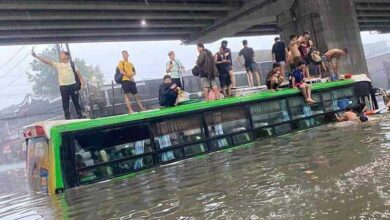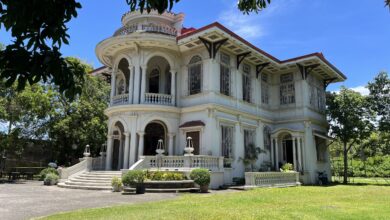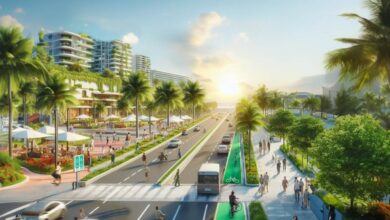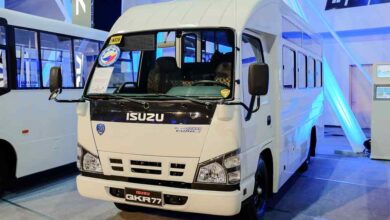
Transport Infrastructure in PH Evolved at a Steady Pace in 2021
Infrastructure has always been a key priority for the Duterte Administration. The landmark project “Build Build Build” has often been touted as one of the legacies of this administration – and rightly so. Nearing the end of the year, what exactly is the status of transport infrastructure in the Philippines?
Let’s start off this yearin-review by assessing our claim earlier this year. Did 2021 end up becoming the year for a transport infra boom?
New Train Stations Unveiled
Pandemic notwithstanding, we entered 2021 with very positive outlook on the current transport infrastructure under the BBB. The transportation sector has always been a a major pain point for Filipinos. How exactly has this improved nearing the end of 2021?
For starters, the promise of two new stations for the Light Rail Transit Line 2 (LRT-2) was kept. These are the Marikina-Pasig Station in Marikina City, and the Masinag Station at the Masinag Junction in Antipolo City, which opened last June. This provided a huge boost in convenience for this part of the Metro, especially as the lockdowns started to ease up.
The Metro Rail Transit Line 3 (MRT-3) has also completed its rehabilitation, and is again fully operational. Last November, it also recorded the highest number of passengers in a single day, ever since the pandemic started in 2020. This is due to the improved capacity of the train line, which is starting to inch back to pre-pandemic levels.
And finally, good news as well on the Metro’s newest line, the Metro Rail Transit Line 7 (MRT-7). As of December, it was reported that its completion rate is already at 62.81%, and is well on track to its target to be partially operational in Q4 2022. In fact, President Duterte recently unveiled the MRT-7’s newest, “world class” train sets. This will provide a huge boost in convenience for the targeted 300,000+ passengers it could service just in its first year alone.
PUV Modernization Approaching Slowly, but Steadily
Meanwhile, for Public Utility Vehicles (PUVs), progress is slow but steady. This sector has been one of the worst-hit during the pandemic, but things are starting to look up.
In November, the government released around P1-billion in fuel subsidies to help our jeepney drivers cope with soaring fuel prices. Hopefully, this gives them a much-needed boost, whose service is again needed as the country starts to open up.
PUV Modernization has always been one of the major priorities of the Land Transportation Franchising and Regulatory Board (LTFRB). Franchise consolidation has always been the key component to this initiative. Consolidation of franchises aims to end the “boundary” system for jeepneys, which causes a lot of problems for our drivers. As of their March 31, 2021 deadline, a total of 95,243 franchises have been consolidated already.
In a show of compassion, those who were not able to meet deadline will actually not be forced to be phased out. They will instead be given time to consolidate until the end of the year.
The Rise of Bike Lanes
A discussion on transport infrastructure would not be complete without an update on bike lanes. The pandemic has radically changed the way we think about public transportation, and bike lanes have been a welcome addition.
For their part, Baguio’s shared roads proposal pushed through this year. The first phase of the project is now being implemented. This will transform the City of Pines into what Mayor Benjamin Magalong calls a “20-minute city”. The goal is for Baguio residents to go about their daily activities within a 20-minute travel time to and from their homes to wherever they need to go – and cycling is a big part of that.
Baguio will soon be part of the growing list of “bike-friendly” cities in the Philippines. Iloilo has always been the benchmark for cycling infrastructure. 2021 is no different, as the city received the gold award during this year’s Mobility Awards, with the silver award going to Mandaue City and Naga City. This award recognizes initiatives that promote active transport and other initiatives that create conducive spaces for cyclists.
READ – PAREX: The Good, The Bad, and The Ugly
The Legacy of “Build, Build, Build”
The numbers are clear, showing the continuous evolution of our transport infrastructure. At the tail-end of 2021, the Department of Public Works and Highways (DPWH) under then Secretary Mark Villar has achieved quite a significant amount:
- Constructed, maintained, widened, and rehabilitated 31,977 KMs of roads
- Widened, upgraded, or rehabilitated 6,333 bridges,
- and constructed 12,394 flood mitigation structures.
These are just the basics. There have been a lot of other projects, like the “We Heal As One” centers for our COVID-19 Response, or the classrooms and other school facilities. In addition, there have been numerous expressways completed such as the Central Luzon Link Expressway and the NLEX Harbor Segment 10.
Despite all these accomplishments, there are still a lot of transport infrastructure projects in the pipeline. As we mentioned in our think piece on building northward – it is contingent on the next administration to continue the legacy of “Build, Build, Build”. The groundwork has already been laid out for a #BetterPhilippines, and it’s exiting to see what the future holds!




